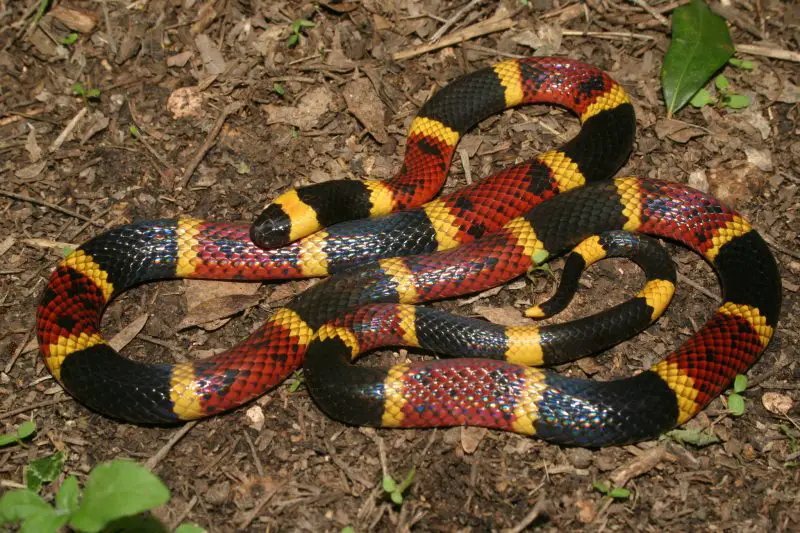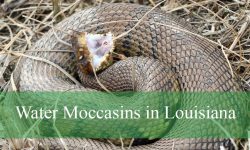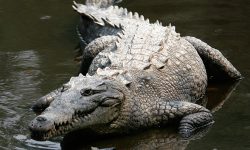Texas is home to some of the most diverse wildlife in the United States—from whitetail deer grazing on open plains to rattlesnakes basking under the hot desert sun. Yet among all the reptiles that slither through the Lone Star State, few inspire as much fascination and fear as the coral snake. With its vivid bands of red, yellow, and black, this slender, secretive serpent has become both a symbol of danger and a source of myth.
Despite their bright colors and potent venom, coral snakes are among the least understood of Texas’ venomous reptiles. Many Texans have heard the famous rhyme, “Red touch yellow, kill a fellow; red touch black, friend of Jack”—but beyond this, misinformation abounds. Are they truly deadly? How common are they? Do they really pose a threat to people or pets?
In this comprehensive guide, we uncover the truth about coral snakes in Texas—their habitat, venom, behavior, and surprising secrets that few people know. You’ll learn how to identify them correctly, understand their ecological role, and know what to do if you ever encounter one.
What Is a Coral Snake?

Species Overview
The coral snake found in Texas is the Texas coral snake (Micrurus tener tener), a member of the cobra family (Elapidae). Unlike pit vipers such as rattlesnakes and copperheads, coral snakes have short, fixed fangs and deliver venom through chewing rather than striking. They are highly venomous but reclusive, preferring to stay hidden rather than confront humans.
Their distinctive pattern of bright red, yellow, and black rings serves as a warning—nature’s vivid signal that this snake is dangerous. However, several harmless species mimic this pattern, leading to frequent confusion and unnecessary fear.
Physical Description
Adult Texas coral snakes typically measure between 20 and 30 inches long, though some can exceed 40 inches. Their bodies are smooth and slender, with round pupils and small heads that blend into their bodies. Unlike pit vipers, coral snakes lack heat-sensing pits and have a more cylindrical shape.
Their color pattern—red bands touching yellow bands—distinguishes them from nonvenomous mimics like the milk snake and scarlet kingsnake, where red touches black instead of yellow.
Distribution Across Texas
Texas coral snakes are native to central, southern, and eastern Texas. They are most common in:
- Pine forests and sandy woodlands of East Texas.
- Coastal prairies and brushlands near Houston and Corpus Christi.
- The Hill Country, extending west toward San Antonio and Austin.
They thrive in humid, vegetated environments with loose soil that allows burrowing. Most coral snake sightings occur in spring and fall when temperatures are mild and humidity is high.
Habitat and Behavior
Secretive Lifestyle
Coral snakes are shy, nocturnal reptiles that spend most of their lives hidden underground or beneath leaf litter. They emerge mainly at night or during cool, wet weather to hunt or mate. During the day, they seek shelter in rotting logs, rock crevices, or under debris.
Because they are reclusive, most Texans will never see one in the wild. When encountered, they usually attempt to flee rather than strike. Their small mouths and short fangs make it difficult for them to deliver venom unless they latch onto a victim and chew—a behavior that is extremely rare.
Diet and Hunting Habits
Coral snakes primarily feed on other reptiles, including small snakes and lizards. They use potent neurotoxic venom to immobilize prey quickly. Once bitten, the prey’s nervous system shuts down, leading to paralysis. This specialized diet makes coral snakes important predators in maintaining balance among smaller reptile populations.
Seasonal Activity
In Texas, coral snakes are most active from March through October, particularly after rain. They avoid extreme heat during summer and enter a semi-dormant state during winter. Early mornings and evenings in spring are the best times to spot them moving across roads or forest trails.
Venom and Danger Level
How Deadly Are Coral Snakes?
Coral snake venom is among the most potent of any North American snake. It is neurotoxic, meaning it affects the nervous system rather than destroying tissue. The venom can cause respiratory failure if untreated—but here’s the truth: bites are exceptionally rare.
According to the Texas Department of State Health Services, no confirmed deaths from coral snake bites have occurred in Texas for decades. Most incidents involve people handling or accidentally stepping on the snake. Because of their small size and reluctance to bite, they pose far less risk than rattlesnakes.
Symptoms of a Bite
If bitten, symptoms may include:
- Slurred speech or blurred vision.
- Numbness or tingling in the affected area.
- Muscle weakness or paralysis.
- Difficulty breathing (in severe cases).
Venom symptoms can take several hours to appear, so even minor bites require immediate medical attention.
Coral Snake Antivenom
Antivenom for coral snake bites exists but is less commonly available than rattlesnake antivenom due to the rarity of bites. In Texas, hospitals in areas where coral snakes are common typically keep a supply. Prompt treatment ensures a full recovery in nearly all cases.
Myths and Misconceptions
Myth 1: Coral Snakes Chase People
False. Coral snakes are timid and avoid confrontation. They may appear to move toward a person while trying to escape to nearby cover.
Myth 2: Coral Snakes Are Common Everywhere
False. They are uncommon and secretive. Most Texans live their entire lives without ever seeing one.
Myth 3: Their Bites Are Instantly Fatal
False. While the venom is potent, deaths are rare thanks to modern medical care. The venom acts slowly, giving ample time for treatment.
Myth 4: The Rhyme Always Works
Partly true. The rhyme “Red touch yellow, kill a fellow” helps distinguish coral snakes from mimics in the U.S., but it doesn’t apply to coral snake species in Central and South America, where patterns differ.
Coral Snakes vs. Their Mimics
Common Mimics in Texas
Several harmless snakes mimic coral snake coloration as a defense mechanism:
- Scarlet Kingsnake (Lampropeltis elapsoides)
- Milk Snake (Lampropeltis triangulum)
- Long-nosed Snake (Rhinocheilus lecontei)
Key Differences
- Color Pattern: Coral snakes have red bands touching yellow bands. Mimics have red touching black.
- Behavior: Coral snakes are secretive and smooth-moving, while mimics are more active during the day.
- Head Shape: Coral snakes have smaller, rounded heads compared to the broader heads of kingsnakes.
Learning these differences helps prevent unnecessary killing of harmless snakes, which are valuable for pest control.
Ecological Importance
Predator and Prey Balance
Coral snakes play a vital role in Texas ecosystems. By preying on smaller snakes and reptiles, they regulate populations that could otherwise become invasive.
At the same time, coral snakes serve as prey for larger animals such as kingsnakes (their natural predator), roadrunners, and raptors. This predator-prey relationship keeps the ecological web balanced.
Bioindicator Species
Because coral snakes are sensitive to pollution and habitat loss, their presence indicates a healthy environment. Declining populations in certain regions may reflect ecosystem disruption, making them a valuable bioindicator species for Texas biologists.
Coral Snakes and Humans
Urban Encounters
As Texas cities expand into rural areas, occasional encounters with coral snakes have increased, particularly in Houston, Austin, and San Antonio suburbs. Most sightings occur after heavy rain or construction that disturbs their natural hiding places.
Safety Tips
If you encounter a coral snake:
- Do not attempt to handle or kill it. Most bites occur during capture attempts.
- Step back slowly and give it space to retreat.
- Educate children to recognize and avoid colorful snakes.
- Keep pets indoors during early morning and evening hours.
What to Do If Bitten
- Remain calm and call emergency services immediately.
- Keep the bite area immobilized and below heart level.
- Do not apply ice, cut the wound, or use a tourniquet.
- Get to a hospital for antivenom administration.
Coral Snakes in Texas Culture
Folklore and Fear
Coral snakes have long appeared in Texas folklore as symbols of mystery and danger. Their striking colors make them the subject of stories passed down through generations, often exaggerated to instill fear.
Yet, modern science paints a different picture—one of a shy, non-aggressive reptile that prefers to avoid humans. Educating the public has helped reduce needless killing and promote respect for these misunderstood creatures.
Conservation and Awareness
Although not listed as endangered, coral snakes face threats from habitat loss and road mortality. Conservation groups in Texas promote education to protect them, recognizing that their decline could signal larger environmental problems.
Fascinating Facts About Coral Snakes in Texas
- They belong to the same family as cobras and mambas, despite their small size.
- They can go months without eating, surviving on stored energy.
- When threatened, they often hide their heads and wave their tails to confuse predators.
- They sometimes “mimic” other snakes by flattening their bodies or producing faint hissing sounds.
- Coral snakes lay eggs (unlike rattlesnakes, which give live birth), usually 3–10 per clutch in summer.
FAQs About Coral Snakes in Texas
Are coral snakes aggressive?
No. They are secretive and avoid humans whenever possible. Bites occur only when provoked or handled.
How venomous are coral snakes compared to rattlesnakes?
Their venom is more toxic drop-for-drop, but they inject much less venom than rattlesnakes.
Where are coral snakes most common in Texas?
They are found mainly in East and Central Texas, particularly in humid forests and grasslands.
What do coral snakes eat?
They feed primarily on smaller snakes, lizards, and amphibians.
How can I tell if a coral snake is near my home?
Look for distinctive red, yellow, and black banding near wooded or sandy areas, especially after rain.
Are coral snakes protected in Texas?
They are not endangered but are protected from unnecessary killing under state wildlife guidelines.
What should I do if I find one?
Leave it alone. Coral snakes rarely linger and will move away if undisturbed.
Conclusion
The coral snake is one of Texas’ most misunderstood reptiles—a creature more feared than it deserves to be. Though its venom is potent, encounters with humans are rare, and its shy nature makes it one of the least likely snakes to bite. Far from being a menace, the coral snake plays a crucial role in the ecosystem, controlling populations of smaller reptiles and signaling environmental health.
By learning to recognize and respect these beautiful snakes, Texans can replace fear with understanding. The next time you see those vivid red, yellow, and black bands gliding through the grass, remember—you’re witnessing one of nature’s most perfectly evolved survivors, a quiet and essential part of Texas’ wild heritage.






